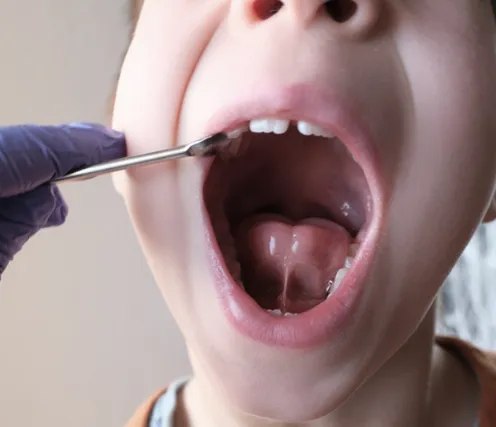EARLY DEVELOPMENT
MOT & Development
Oral development begins with feeding. Environmental conditions and the decisions we make as parents will have an affect on the oral-facial growth and development of our child. The development of a baby’s mouth and facial features can potentially be negatively affected by choosing between breastfeeding and bottle feeding. Some mothers choose not to breastfeed. Others want to but are unable to.
Premature babies often get tube-fed, which can encourage the development of a narrow palate. Birth traumas can lead to increased feeding issues, breathing concerns, and craniofacial development. Whatever the choice, it’s important to know the affects to better understand the symptoms.

Breast Feeding VS. Bottle Feeding
Breastfeeding provides nutritional benefits. It is also influential for proper facial growth and development. It helps shape the palate and jaws for proper facial growth. Breastfeeding promotes nasal breathing, trains the tongue to rest on the palate by applying pressure to the nipple, and requires more muscle control and coordination, which helps prevent speech problems.
Bottle feeding can cause similar issues to oral habits such as prolonged pacifier use, thumb or finger sucking, and prolonged sippy cup use. It keeps the mouth and lips open, keeps the tongue resting low, and encourages an incorrect tongue thrust swallowing pattern. All of which contribute to myofunctional problems and can lead to sleep apnea in adults. Bottle feeding tends to shape the palate into a higher V-shape,” leading to the need for orthodontic care. It also requires less muscle coordination as the muscles do not have to work as hard, which causes a lack of muscle tone and the ability for the lips to stay closed.
Tongue ties and lip ties, or a combination of both, can contribute to the following issues:
- Breastfeeding complications
- Nipple pain and trauma
- Clicking sound while baby is feeding
- Baby often loses suction on the breast
- Inadequate milk production or intake
- Poor weight gain
- Acid reflux, spitting up often
Ear Infections
- Children and adults who have a history of multiple ear infections or tubes placed
- Trouble clearing or popping ears
- Fluid in the ears or “feeling full”
- Often connected to a tongue tie, mouth breathing, and/or a tongue thrust
- May also be connected to tinnitus, vertigo and TMD
Speech Concerns
It is important to understand how the type of feeding and sucking behaviour strongly influences the growth and development of a baby’s dental and facial characteristics. The oral development of motor structures is reflected in craniofacial development and dentition. This association is a potential risk factor for speech disorders in children.
Myofunctional therapy is NOT speech therapy; however, OMT focuses on the muscle placement and tongue position needed for speech.
A lisp is the most common problem associated with myofunctional symptoms. Several sounds require the tongue to elevate to the palate, roll back and elevate to the palate, or require lip closure. Low posture, tongue tie, mouth breathing, and open mouth posture can affect the pronunciation of the letters “S”, “T”, “D”, “N”, “L”, “B”, “P”, “M” and “R”, and can contribute to a lack of clarity, mumbling, and minimal voice projection.
FAQ'S




Our priority is to build rapport with our clients by taking the time to get to know them and listen to their concerns and goals. We genuinely want to elevate our clients to their personal best in aspects of their oral health to achieve optimal health.
Our intention is to alleviate anxiety by providing a comfortable, relaxing setting that brings serenity and calmness to a spa-like experience. We use the newest technology with EMS-guided biofilm therapy, which is minimally invasive, effective, and gentle on the teeth and soft tissues with a heating system with an adjustable water temperature for client comfort.


